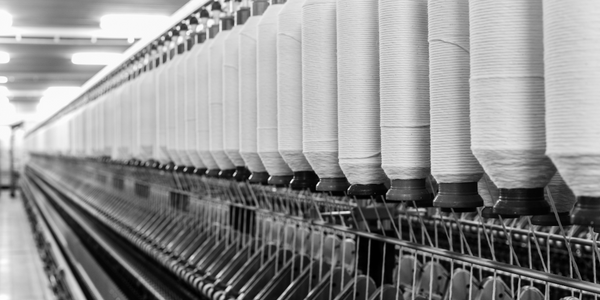Technology Category
- Platform as a Service (PaaS) - Application Development Platforms
- Wearables - Smart Clothing
Applicable Industries
- Apparel
- Consumer Goods
Applicable Functions
- Product Research & Development
Use Cases
- Real-Time Location System (RTLS)
- Time Sensitive Networking
Services
- System Integration
About The Customer
Betabrand is an online women’s apparel company known for its Dress Pant Yoga Pants and other activewear suitable for work and travel. The company is unique in that it allows its customers to participate in the design process by voting on new clothing concepts and providing feedback. This helps Betabrand bring the best new products to market based on their consumers’ recommendations. The company also hosts live shows weekly where new products are launched and designers field questions about new items. Betabrand aims to be the 'Facebook of fashion', driving discussion among its users through social feeds and interactive chat.
The Challenge
Betabrand, an online women’s apparel company, aimed to become the 'Facebook of fashion' by integrating common social network features into its platform. The company wanted to drive discussions among its users through social feeds and interactive chat. However, Betabrand did not want to divert its focus from its core competencies by developing these features in-house. The company was also keen on maintaining its unique selling proposition of providing an interactive online experience. Therefore, the integration of live chat was crucial for their business model. Betabrand needed a solution that could provide activity feeds for their designs and notifications, along with a real-time chat product, without requiring a heavy investment or a long development process.
The Solution
Betabrand found its solution in Stream, a provider of chat messaging and feeds products. The company had already been using Stream’s feeds product to showcase their clothing designs and was excited to learn about the introduction of chat messaging to Stream's product offerings. Betabrand was interested in keeping both chat and feeds on the same platform, making Stream an ideal choice. The company also appreciated the fact that they could use the same Javascript SDK for feeds and chat. Leveraging Stream’s functionality, Betabrand built an MVP in a quick turnaround time, fine-tuned the product, and had chat live on their site in less than a week. Stream Chat and Feeds became the solutions that allowed Betabrand to understand what designs their customers wanted to see in an efficient, clean, and clear way.
Operational Impact
Quantitative Benefit

Case Study missing?
Start adding your own!
Register with your work email and create a new case study profile for your business.
Related Case Studies.

Case Study
Fire Alarm System and Remote Monitoring Sytem
Fire alarm systems are essential in providing an early warning in the event of fire. They help to save lives and protect property whilst also fulfilling the needs of insurance companies and government departments.Fire alarm systems typically consist of several inter-linked components, such as smoke detectors, heat detector, carbon monoxide, manual call points, sounders, alarm and buzzer. The fire alarm system should give immediate information in order to prevent the fire spread and protect live and property.To get maximum protection a shoe manufacturer in Indonesia opted for a new fire alarm system to monitor 13 production sites spread over 160 hectars. Although the company had an existing fire alarm system, it could not be monitored remotely.It was essential that the new system would be able to be monitored from a central control room. It needed to be able to connect to the existing smoke detector and manual call point. Information should be easily collected and passed on to the Supervisory Control and Data Acquisition (SCADA) system. Furthermore, the system should have several features such as alarm management, auto reporting, being connected to many client computers without additional cost, and run 24/7 without fails. The company also needed a system which could be implemented without changing the architecture of the existing fire alarm system.

Case Study
IoT Applications and Upgrades in Textile Plant
At any given time, the textile company’s manufacturing facility has up to 2,000 textile carts in use. These carts are pushed from room to room, carrying materials or semi-finished products. Previously, a paper with a hand-written description was attached to each cart. This traditional method of processing made product tracking extremely difficult. Additionally, making sure that every cart of materials or semi-finished products went to its correct processing work station was also a problem. Therefore, the company desired an intelligent solution for tracking assets at their factories. They also wanted a solution that would help them collect process data so they could improve their manufacturing efficiency.
.png)
Case Study
Improving Vending Machine Profitability with the Internet of Things (IoT)
The vending industry is undergoing a sea change, taking advantage of new technologies to go beyond just delivering snacks to creating a new retail location. Intelligent vending machines can be found in many public locations as well as company facilities, selling different types of goods and services, including even computer accessories, gold bars, tickets, and office supplies. With increasing sophistication, they may also provide time- and location-based data pertaining to sales, inventory, and customer preferences. But at the end of the day, vending machine operators know greater profitability is driven by higher sales and lower operating costs.

Case Study
Retailer Uses RFID Scanner to Improve Efficiency
Patrizia Pepe wished to improve the logistics of their warehouse: accepting incoming goods from their production sites, movement of items throughout
the warehouse, and packaging of goods for distribution to the retail locations. They initially tried to use barcodes for this function. Because barcodes must be individually scanned within a line-of-sight, the acceptance of goods coming into the warehouse was too time consuming. Working with the University of Florence, Patrizia Pepe instituted a five-month pilot project beginning in August of 2009 to test the validity of an RFID solution. The pilot involved tagging of about 60,000 items for the second seasonal collection, and convinced the company to move forward with tagging all items.









